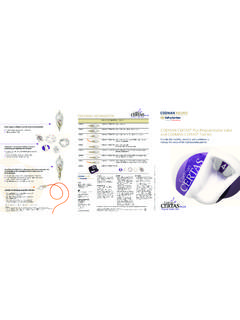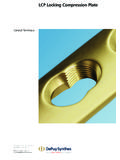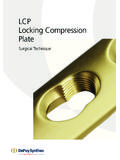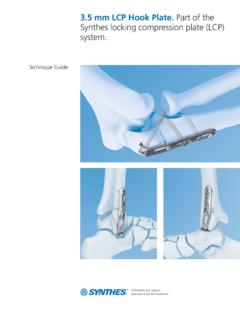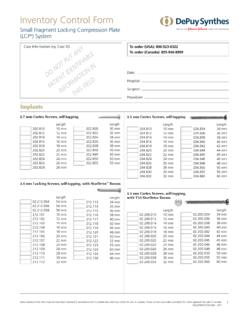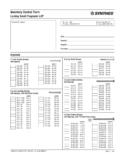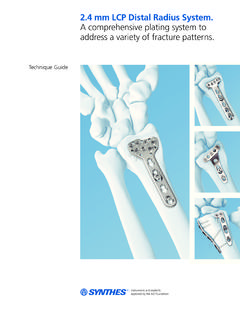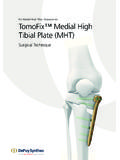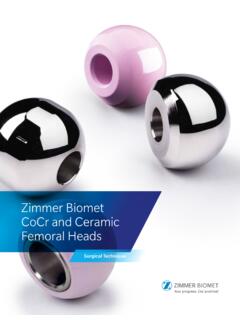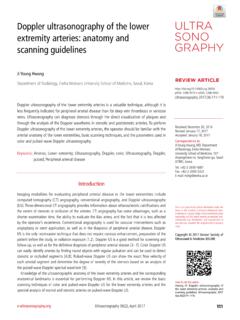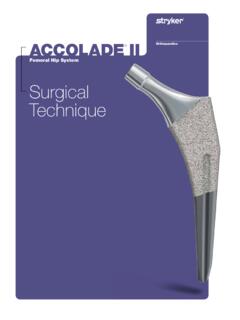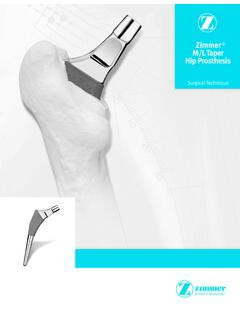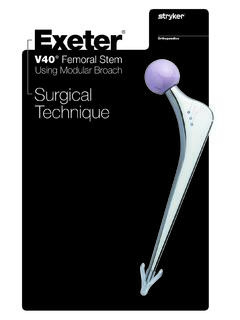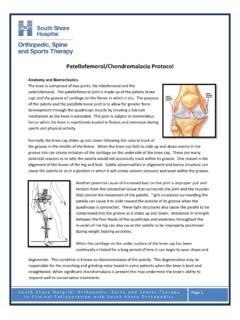Transcription of TOTAL HIP SYSTEM Surgical Technique
1 ACTIS . TOTAL HIP SYSTEM . Surgical Technique Approach Patients with Confidence The ACTIS TOTAL Hip SYSTEM is the first DePuy Synthes stem specifically designed to be utilized with tissue sparing approaches, such as the anterior approach, as well as traditional approaches. The implant and instrumentation are designed to balance ease-of- insertion and may provide improved implant Table of Contents Surgical Technique Pre-Operative Planning 4. femoral Neck Osteotomy 6. femoral Canal Preparation 7. Distal femoral Reaming (Optional) 9. Trial Reduction 10. Calcar Preparation 11. femoral Component Insertion 12. femoral Head Impaction 13. Technical Specification 14. Ordering Information 15-19. Notes Warnings ACTIS TOTAL Hip SYSTEM Surgical Technique 3.
2 Surgical Technique Pre-Operative Planning Determination Of Leg Length Discrepancy Perform a clinical evaluation in conjunction with a radiographic analysis to determine pre-operative leg length discrepancy, and use both to determine intra-operative leg length management. To estimate leg length discrepancy radiographically, draw a reference line across the bottom of the ischium (as shown). Other landmarks such as the Teardrop or Obturator Foramen can be used. Measure the distance from the lesser or greater trochanter landmark (both distances shown in Figure 1) to the reference line on each side. The difference between the pelvic reference line and the femoral landmarks is the radiographic leg length discrepancy. Clinical examination should help determine the actual leg length irregularity.
3 Figure 1. Acetabular Cup Sizing And Position Acetabular sizing determinations are made using the A/P. radiograph of the hip. Determine the optimal position for the acetabular component and estimate the size using the PINNACLE Acetabular Cup SYSTEM template overlays. The acetabular teardrop can be referenced as the inferomedial margin of the acetabular reconstruction. The goal in cementless acetabular fixation is to optimize position and bone contact. Once this is determined, mark the intended center of rotation of the bearing surface on the A/P radiograph. (Figure 2) +4. 56mm +2. +0. Figure 2. 4 Surgical Technique ACTIS TOTAL Hip SYSTEM Surgical Technique Cementless femoral Stem Selection Select the template size that fits the proximal femur and equalizes leg lengths.
4 The femoral template should be in line with the long axis of the femur, and the neck resection line drawn at the point where the selected stem provides the desired amount of leg length. The vertical distance between the planned center of rotation of the acetabular component and the center of rotation of the femoral head constitutes the distance the leg length will be adjusted. The ACTIS Stem is available with standard and high offset options, as well as collared and collarless options for all stem sizes. The high offset option provides direct lateralization, increasing offset without affecting leg length. Through templating and trialing, determine which option restores proper offset and center of rotation by matching the cup's center of rotation with the desired head center of rotation of either the standard or high offset ACTIS Stem.
5 (Figure 3). Tips Templating is an important guide in the routine process of pre-operative planning. Intra-operative feedback should be used to establish final leg length and hip stability. Patient positioning is key to obtain adequate cup positioning and hip stability. Figure 3. A lateral x-ray should be used to assess stem size. Ideal x-rays are standing (weight bearing) x-rays. Be sure to account for any pelvic tilt at this point in the procedure to help ensure correct positioning of final implants. Due to the triple tapered geometry of the implant, cortical contact may be achieved circumferentially. ACTIS TOTAL Hip SYSTEM Surgical Technique 5. Surgical Technique femoral Neck Osteotomy Align the neck resection guide with the long axis of the femur (Figure 1).
6 This establishes the angle of resection at a proper 50 from the femoral axis. Determine the resection level by aligning the top of the guide with the tip of the greater trochanter or by measuring a pre- operatively determined distance above the lesser trochanter. Mark the resection line using electrocautery or methylene blue. Resect the femoral head. Tips For the collared stem option, be conservative with initial neck cut. In order to achieve intimate collar/. calcar contact, the calcar should be milled to the level of the final broach. A neck resection guide that can be used with fluoroscopy (as shown in Figure 2) is available to help position the neck resection from the anterior side of the femur. (Cat. Nos. 2010-03-100 and 2010-03-105.)
7 For left and right hips, respectively). 6 Surgical Technique ACTIS TOTAL Hip SYSTEM Surgical Technique femoral Canal Preparation Utilize the modular box osteotome with the broach handle to enter the femoral canal and to establish version. The box osteotome should be started in the same version orientation desired for the final implant. Tips Preserve more of the medial aspect of the greater trochanter, relative to the traditional fit-and-fill stem. Initiate the envelope in line with the posterior cortex to promote proper stem alignment. ACTIS TOTAL Hip SYSTEM Surgical Technique 7. Surgical Technique femoral Canal Preparation The ACTIS TOTAL Hip SYSTEM offers several broach handles that enable the many Surgical approaches for hip replacement.
8 Select the handle that best suits the needs of the performed approach. Begin broaching with the ACTIS Starter Broach. While taking care to maintain proper alignment and version, sequentially advance the broaches down the femoral canal. Continue to increase broach size until the broach attains axial and rotational stability, and is at a seating level that recreates proper leg length. Tips A rasp or similar instrument can be used to open the canal. Initiate the broach parallel to the posterior cortex to promote proper stem alignment. Hybrid broach with Many stems emphasize the removal of bone lateral to compaction broach the stem and force the broach handle laterally during pattern on the Anterior/. broaching to avoid varus positioning of the stem.
9 In Posterior sides and broaching for the ACTIS TOTAL Hip SYSTEM , it is extraction teeth on the preferable to broach starting in slight varus, allowing Medial/Lateral sides of the stem to gain neutral positioning as the broach the broach. size increases. Overemphasizing a valgus force during broaching can cause a scenario where the broach is axially stable but rotationally not stable. Influencing the broach into varus can help remedy this circumstance. Straight Take care not to rotate the broach when inserting and 2570-00-000. extracting to preserve anterior cancellous bone. For the collared stem option, ideally, the calcar will be 1-2 mm above the final broach. This allows the Extra Curved calcar reamer to be employed to level the calcar with 2598-07-550.
10 The implant collar. (Included in ACTIS. Instrument Set). Dual-Offset 2598-07-350 (Left). 2598-07-360 (Right). 8 Surgical Technique ACTIS TOTAL Hip SYSTEM Surgical Technique Distal femoral Reaming (Optional). When unique femoral morphologies are encountered, such as Dorr Type A femora, ACTIS Distal Reamers are available to help ensure proper stem fit and stability. These situations can be identified via pre-operative planning, as well as intra-operatively when the broach will not progress further into the canal and has yet to achieve rotational stability. Each distal reamer shaft is marked with two stem sizes, except for size 12, which has a unique reamer design. The circumferential mark next to each size indicates the depth to which the reamer should be advanced into the femur.
